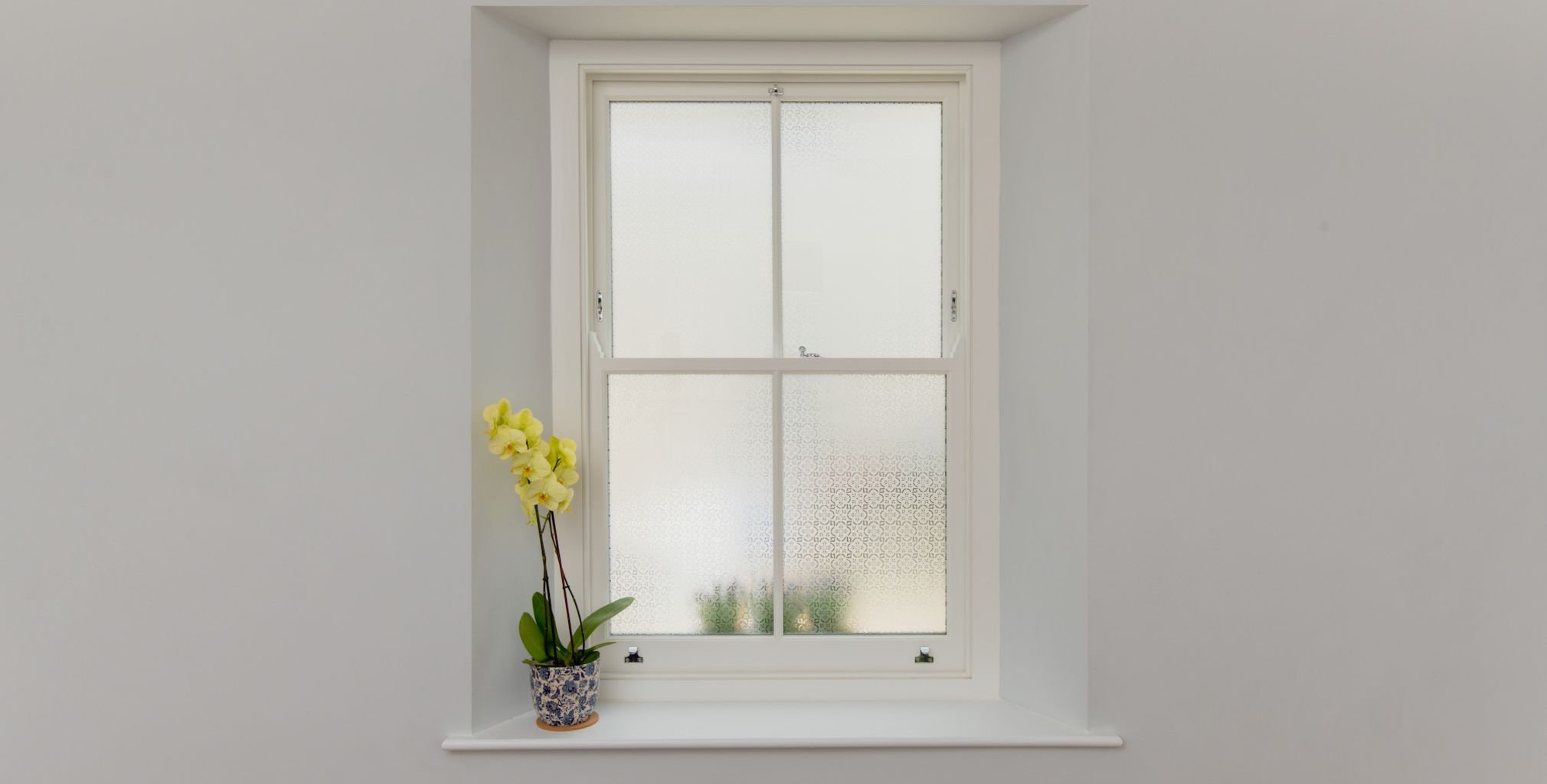A Guide To Window Terminology
Get to know and understand the language of windows.
Designing and handcrafting bespoke timber windows is what NMJ has done best since 2007. And we’re proud to be a leading manufacturer of traditional window frames of all types and sizes. So, there’s not much we don’t know when it comes to window terminology. But we also know it’s helpful for our customers to understand the terminology used in the industry.
So, while all the window terms and language are second nature to us, we’ve compiled this handy guide for you. From frame types to installation details and functional features, these are some of the most common terms you’ll come across during your window journey with us.
Window types and frame designs
Direct Glaze Window
A non-opening window which has the glass fixed directly into the wooden frame and is used for larger areas, allowing for maximum natural light.
Flush Casement Window (Traditional)
Windows with a surface flush with the external frame that have a hinged opening, using a handle. Casement windows provide quick and easy ventilation and suit period, historical, traditional, and modern homes.
Fanlights
Small windows sometimes placed above a larger window to increase light or ventilation and can feature decorative glazing or shaped designs.
Fixed Window
A non-opening window designed to allow light into a space while maintaining insulation and security. Often used alongside opening windows for a balanced design.
High Performance Flush Casement Window
The appearance of a traditional flush casement, but with modern elements such as multipoint locking, 90º easy-clean side-hung friction hinges, or top-hung options. These can often be locked in a vent position for night-time airflow, and certain configurations can also meet fire egress regulations wherever required.
Sash Window / Box Sash
A classic window style with one or more moving glazed sash panels that slide vertically and are hung on pulleys with cords and balanced with weights. Often found in period properties, offering a timeless, elegant look.
Spiral / Spring Balance Window
The same elements and finish of a Sash/Box Sash window, but using a spiral or spring balance mechanism, often pre-tensioned to balance the weight of the sash and replacing the traditional cords and weights.
Stormproof Window
A variation of casement windows that open outwards, featuring a casement section that sits proud of the frame for extra protection against harsh weather conditions.
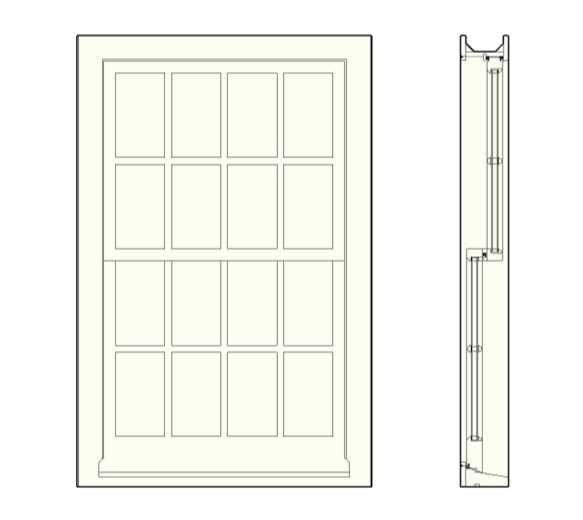
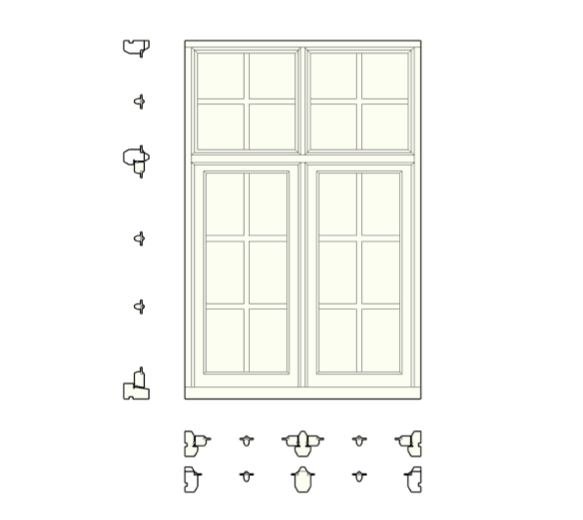
Window structural and functional features
Astragal Bars / Glazing Bars
Slim bars that sit inside and outside the glass to give the appearance of smaller individual panes similar to traditional period windows. Also referred to as surface-mounted glazing bars.
Glazing Beads (Beads / Beaded Wood)
A small strip of wood that safely secures the glass in place and can be used with glazing tapes and glazing silicon/sealant. While functional, beading can be decorative or plain and is an essential part of traditional and modern windows, holding window glazing or glass types in place.
Jamb
The vertical sides of any window frame that support the frame connecting to the head and sill.
Mullion / Transom
A vertical (Mullion) or horizontal (Transom) timber frame element which gives the overall frame essential structural support, or divides the window up for aesthetics.
Projecting/Projection Sill / Stub Sill
An angled projecting sill will extend beyond the bottom of the window frame, helping to divert water away from the building and prevent water damage or damp. Stub sills serve the same purpose but will have a much shorter overhang.
Reveal
The inner and outer parts of the opening or recess in a wall where the window frame is attached.
Stiles
The vertical part of timber that forms the sides of a window casement or sash and gives structural support while holding the glass panes in place with the top and bottom rails.
Top Rail / Bottom Rail
The top rail is the horizontal piece at the top of a window casement or sash, while the bottom rail is at the bottom. Both work together with the Stiles to provide structural support and secure the glass panes.
Warm Edge Spacer Bar
The thermally efficient perimeter bar that holds the two pieces of glass apart to form a double glazed unit, reducing heat loss, minimising condensation, and improving energy efficiency compared to traditional metal spacers.
Window Frame
The outer section of any window that holds casements or glass in place.
Window profile features
45º Stopped Chamfer
A bevelled edge detail where a 45-degree angled cut is made to part of a timber edge, stopping before the end for a decorative finish.
9º Sill
A specific measurement to give a slight downward slope on a window sill, which directs water runoff away from the building to prevent moisture damage.
Bevel / Splay / Angles
A decorative 45º angled edge applied to timber to improve the visual appeal of traditional and bespoke window designs. Different angles improve window visuals, improve light distribution, and can help with water runoff.
Drip Groove / Capillary Groove / Drip
A drip groove or capillary groove is a shallow groove or channel typically cut into the underside of a window sill or frame. A drip can be a ledge or trim that juts out from the top of the window frame. Both direct rainwater away from the wall and the frame to prevent water damage and damp spots.
Groove
A narrow channel machine profiled into the timber section, typically used to create joins in timber lengths, or as a capillary groove to allow water to drip away from the window frame. Other uses may be purely aesthetic, i.e. decorative shadow detail features in functional elements like beading.
Horns
Associated with traditional sliding box sash windows, horns are a decorative component on the sashes.
Lamb’s Tongue
A classic, subtle curved profile with a tapered end that adds a decorative yet authentic period detail to sash windows.
Ovolo
A decorative and elegant detail used on a casement window frame that creates a soft, curved shape popular on period properties.
Pencil Round
A smooth, rounded edge decorative finish. Usually used to take the sharpness off and soften any edges while helping to reduce dents and dings.
Rebate
A recess or step cut into the window frame allows for a secure fit for glass or sashes, giving an airtight and smooth operation.
Square
This term simply refers to a clean, right-angled window frame where all four corners are at perfect 90º angles (square), ensuring a tight and proper fit.
Tongue and Groove
A traditional woodworking technique where one timber piece has a ‘tongue’ that fits into the ‘groove’ of another piece to give a tight and seamless joint. Tongue and groove can also be used with the term ‘V Groove’, which is a 45º angle on the shoulders of the tongue and groove edges.
Window components
Butt Hinge
A standard recessed hinge where two plates are connected by a fixed pin and barrel, allowing smooth opening and closing of a casement window.
Espagnolette
A multi-point locking mechanism commonly used inside a modern casement window. Operated by a handle, it engages the locking points for extra security.
Trickle Vents
Discreet ventilation openings typically built into the window frame or head of the window unit, allowing a controlled fresh air flow into the room when the window is closed, helping to reduce condensation and improve indoor air quality.
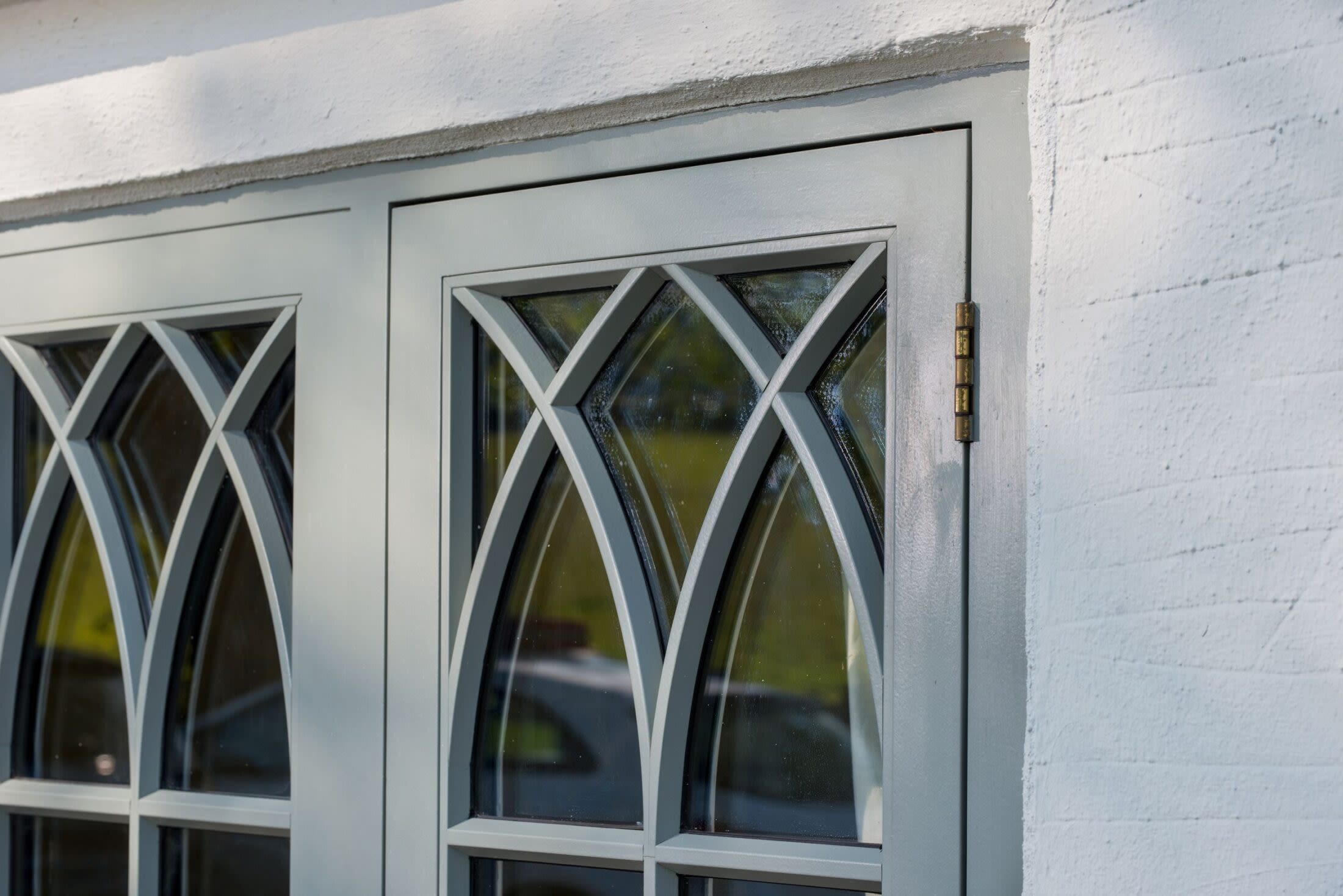
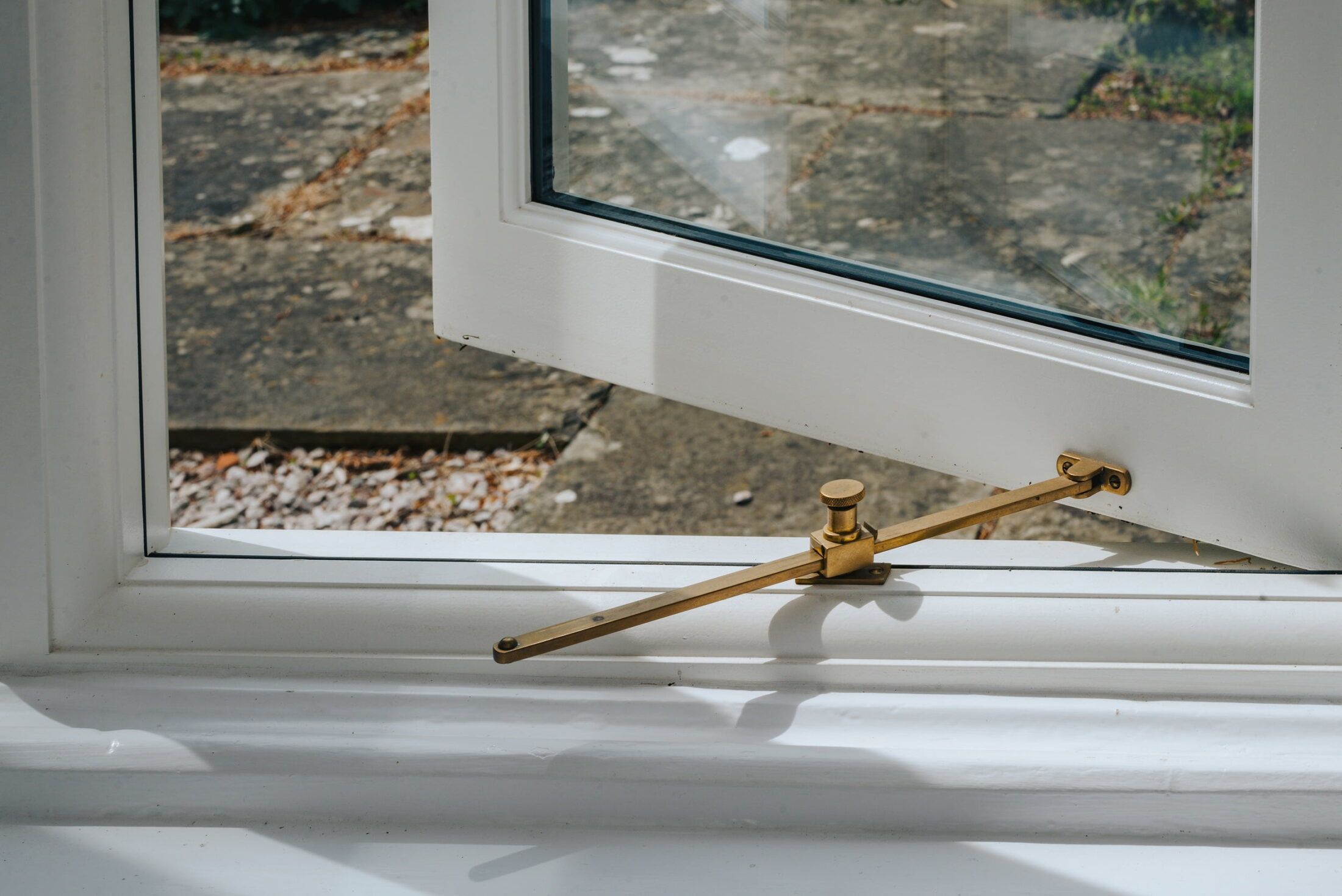
Window materials and finishes
Engineered Wood
A high-quality timber product which is made by bonding layers of wood together for enhanced strength, stability, and durability compared to a natural solid piece of wood planked/cut out from the tree. Usually, the best small bits are cut out of the tree before being bonded to make the engineered wood, reducing waste and increasing product sustainability.
Grain / End Grain
The natural pattern of the wood fibres that can make a difference to your window’s finished look and the wood’s workability. Grain can vary from one piece of the same material to the next, giving timber/wood its natural look without always conforming to a uniform look. The end grain refers to the exposed cross-section of the timber, which, unless properly finished and sealed, is vulnerable to moisture absorption.
Hardwood / Softwood
Timber window frames can be crafted from either durable hardwoods like European Oak or tropical hardwoods such as Sapele, Utile, Meranti (or others including Iroko or Idigbo), or sustainable modified solid timbers like Accoya, or varying quality softwoods like Pine (often referred to as Scandanavian redwood in the trade), Douglas Fir, and Western Red Cedar. Other timbers may also come from the Eucalyptus family, used as Red Grandis, a hybrid laminated timber.
Knot
A natural imperfection in the timber where a branch once grew, which is darker in appearance. Knots can add character but may need additional treatment.
Microporous Paint
A breathable and flexible paint used on timber to allow moisture to escape while protecting it from rainwater for added durability and reduced maintenance.
CAD Drawings
Detailed technical drawings (drawn on computer) showing the elevation, plan, or cross-section of window elements, including thickness, moulding styles, and other section details and design elements. These drawings are sometimes a requirement to gain consent and planning permission for any listed building, but may also be used to ensure you receive the end product as agreed, even if planning isn’t needed.
RAL Colour
A standardised colour-matching system used for paint or coating finishes to ensure consistent and precise colour choices across different materials and product ranges.
Understand every part of your windows with NMJ experts
As a homeowner, having an understanding of window terminology really helps you to make informed decisions when choosing exactly what you want from your bespoke timber windows. From window styles to structural, functional, and decorative elements, every detail contributes to your window’s visual appeal, durability, and performance – and we hope this plain English guide will help you.
For more information on any type, style or design of wooden handcrafted windows for your home, to arrange a site survey, or to talk to us about your ideas, call NMJ today on 01822 615 010, email us at , or send us a message to get started.
